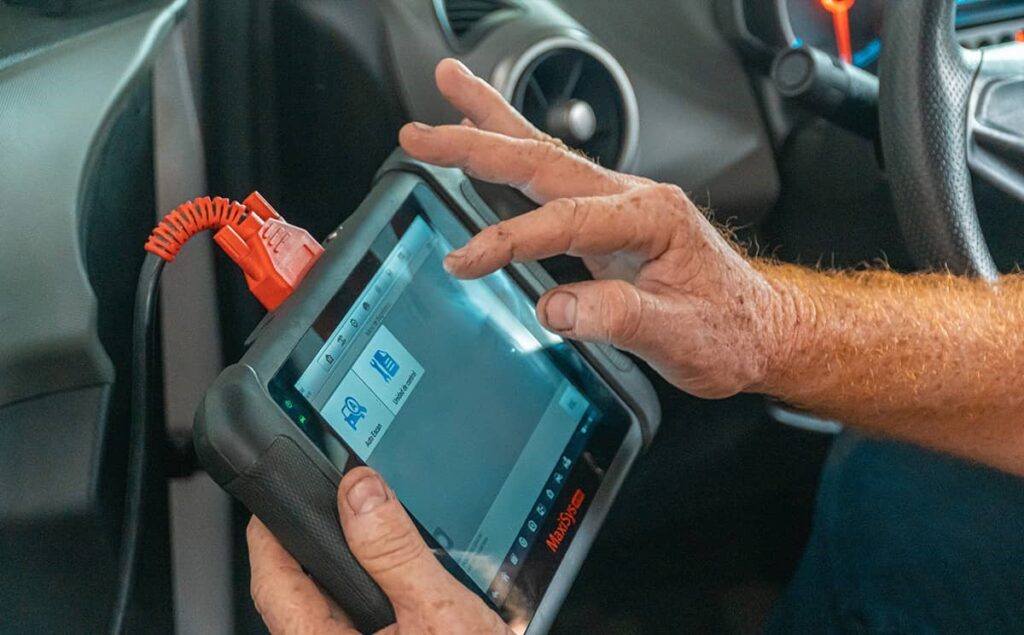
When buying a used car, a thorough inspection is essential to ensure you’re getting a good deal and avoiding potential problems. Here’s a comprehensive guide to help you with Used Car Inspection.
1. Exterior Check
- Body and Paint: Inspect the car’s body for dents, scratches, rust, and signs of repair. Look for mismatched paint colors which could indicate bodywork.
- Tires: Check all four tires for even tread wear. Uneven wear might suggest alignment issues. Ensure the tires have sufficient tread depth and are free from cuts or bulges.
- Windows and Lights: Examine all windows, mirrors, and lights for cracks, chips, or fogging. Test all lights, including headlights, brake lights, and indicators.
2. Interior Inspection
- Seating and Upholstery: Inspect the seats for tears, stains, and signs of excessive wear. Make sure the seat adjustments work properly.
- Controls and Electronics: Test all electronic features, including the air conditioning, heating, radio, and power windows. Check the dashboard for warning lights.
- Safety Features: Verify that seat belts are in good condition and operate smoothly. Check for the presence and condition of airbags.
3. Under the Hood
- Engine: Look for any signs of leaks, corrosion, and worn hoses or belts. Check the oil level and condition; clean oil indicates good maintenance.
- Fluids: Check the levels and condition of all fluids, including coolant, brake fluid, and transmission fluid. Low or dirty fluids could indicate neglect or potential issues.
- Battery: Examine the battery terminals for corrosion and check the battery’s age. Batteries typically last around three to five years.
4. Underneath the Vehicle
- Exhaust System: Inspect the exhaust for rust, damage, or leaks. A healthy exhaust system is vital for performance and emissions.
- Frame and Suspension: Look for any signs of rust or damage to the frame. Check for leaks and examine the shocks and struts for wear.
5. Test Drive
- Startup: Listen for any unusual noises when starting the engine. The engine should start smoothly without hesitation.
- Brakes: Test the brakes at various speeds to ensure they are responsive and quiet. The car should not pull to one side when braking.
- Steering and Handling: Evaluate the steering for responsiveness. The car should track straight without drifting and handle well over bumps and turns.
- Acceleration and Transmission: The car should accelerate smoothly without jerking. For automatic transmissions, shifts should be smooth; for manual transmissions, the clutch should engage smoothly.
6. Vehicle History Report
- Accident History: Obtain a vehicle history report to check for any previous accidents. The report will also provide information on past ownership and any title issues.
- Service Records: Review the car’s service records to ensure it has been regularly maintained. Consistent maintenance is key to a vehicle’s longevity and reliability.
7. Professional Inspection
While you can perform many checks yourself, a professional inspection by a mechanic is highly recommended. A mechanic can identify issues that might not be visible during a casual inspection and provide an expert assessment of the car’s condition.
Conclusion
A detailed used car inspection is crucial to ensure you’re making a wise investment. By following this guide, you can uncover potential problems and avoid costly surprises. Whether buying from a dealership or a private seller, taking the time to inspect the car thoroughly can save you money and provide peace of mind.
Ride Check is here to support you with expert advice and tips to make your used car buying experience as smooth and informed as possible. Trust us to help you navigate the process with confidence and clarity.